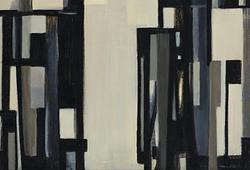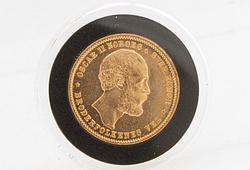Skulpterade objekt, fyra stycken, trä. Asmat, Indonesien, Jakarta, 1900-tal.
Skuren dekor. Längd 50-70 cm.
Slitage, torksprickor.
Proveniens
A private collection of Indonesian and Persian works of Art, part III.
The collection is a study collection and was brought together by a Swedish Connoisseur of Art. Making a career first at SIDA (Swedish International Development Cooporation Agency) and then later, he had a long career with the United Nations where he came to work mostly in Sweden, Iran, India, Thailand, Philippines, Indonesia and New York for close to 30 years. During these years, the academic collector built up his vast collection. Never tiring of attending auctions, lectures, seminars, museums and workshops relating to the objects he was interested in. Spending weekends visiting antique dealers, fairs and viewings. This is the third part in a series of charity auctions.
The entire proceeds of this Auction Sale will be donated for research relating to Dementia, Alzheimers and for the benefits of families and medical/social personnel caring for patients suffering from brain diseases, according to wishes from the collectors’ immediate family.
Litteratur
The complex carvings of the Asmat were first seen by the Western world in the early 20th century, when a few pieces went on display in Europe and America. Many major artists, including Henri Matisse, were stunned by the imagery within this unknown artform. The later work of these Western artists reflects the influence of the Asmat carvings.
Asmat carvings, however, are not "art" as we conceive of it. They are a form of communication between the living and the dead, between the Asmat and the spirits around them. Their carvings make spirits tangible and create a balance between the seen and unseen world. The Asmat carver is not an artist but a man who uses his talents to "write in wood."
What impresses us in Asmat carvings is the interlacing of figures that flow from one to another. It is even more impressive when we realize that these intricate patterns were created using the simplest of tools (rock, bone, and shell). But carving in wood is merely part of a continuous cycle to the Asmat. They believe that humans were carved out of the wood of a tree. Living trees therefore represent the human form, with legs, arms, trunk, and a head. So when an ancestor dies, a carving is made to provide a remembrance of that ancestor and to give that person's spirit a place to reside. The cycle continues then from when the human form emerged from the wood, to death when the spirit returns to the wood.






























